Today, the threat of a global outbreak of stem rust disease is in the news and on the minds of plant pathologists and other agricultural scientists in many countries (4,5,8). We as scientists worry, however, about the public’s comprehension of the genuine threat stem rust as well as other plant diseases pose to our food supply. Yet, there have been rare cases in our history when the public was acutely aware of the social and economic consequences of plant diseases.
A perfect example is the Barberry Eradication Program for stem rust control that developed in the United States during the early 20th century. In the first two decades after the program’s establishment in 1918, the general public in thirteen grain-growing US states became dynamic participants in the eradication effort itself. Not only did they become strong advocates for an unprecedented large-scale disease control program, through a massive educational campaign the public became aware and informed on detailed aspects of pathogen biology and stem rust disease epidemiology previously the sole domain of the scientist. With the knowledge gained, the public became active and significant contributors to the Eradication Program by helping federal and state authorities locate and destroy thousands and thousands of barberry bushes threatening the US wheat crop.
Introduction
The Barberry Eradication Program was a massive federal and state campaign begun in 1918 through a cooperative arrangement between the United States Department of Agriculture and thirteen US states to eradicate the common barberry bush from the major wheat-producing areas of the nation (2,6).
The common barberry, Berberis vulgaris, is an introduced species that was once planted extensively as a popular ornamental bush throughout the northern half of the US. But the bush also has a dark side − it serves as the alternate host of the fungal plant pathogen Puccinia graminis, the cause of stem rust disease, the most destructive pest of wheat. As the alternate host, barberry is where the fungus lives an important part of its life cycle. Rust spores infect the barberry in the spring, where they develop and move from the barberry to infect wheat in the late summer, leading to epidemics. In addition, the barberry is where sexual reproduction of the fungus occurs, producing new combinations of virulence genes in the fungal population resulting in the development of new genotypes capable of attacking wheat cultivars that contain different rust resistance genes (7).
In the late 19th and early 20th century, stem rust epidemics were common in the north-central US, severely disrupting successful wheat production. Epidemics occurred annually and in many years led to near total loss of crops. The epidemics of 1916, for example, were the worst on record. In the three hardest hit states of Minnesota, North and South Dakota, stem rust reduced wheat yields on average by about 60% between 1915 and 1916.
Aware that the common barberry was responsible for initiating these devastating epidemics, proponents of eradication successfully argued for the total removal of the bush by compulsory legislation throughout the northern wheat-growing region of the US. What followed was perhaps the most massive undertaking ever to remove an introduced plant species from the U.S and certainly one of the largest plant disease control programs ever attempted. Before the eradication campaign was phased out between 1975 and 1980, eighteen states had participated in the program and over 500 million barberry bushes had been destroyed on private and public property involving more than 1 million square miles.
The Barberry Eradication Program was very ambitious, involving an enormous multi-state, long-term applied science effort. On an unprecedented scale, it involved the cooperation of the federal government through the United States Department of Agriculture, state departments of agriculture, universities, the extension service and experiment stations in each cooperating state, county and local governments, farmers’ organizations, as well as business and industry. Little known, however, is that the Barberry Eradication Program also involved the general public in some interesting and unique ways.
The Dilemma of a Popular Bush
When the Eradication Program began, the common barberry had a long history as a favored bush. European colonists transported it to North America from Europe and settlers took plants and seeds west and north out into the continent’s midsection in the mid-1800s. The common barberry had a long list of reported benefits and uses, from making wine and jellies from its berries, to yellow dye from the inner bark, to fashioning rake handles from its tough canes. By the late 19th and early 20th century, the most popular use of the barberry was as an ornamental bush and hedge plant. Aiding its popularity and dissemination was the barberry’s easy propagation by seed or cuttings, vigorous growth habits in different environments, and widespread advertisement in nursery and seed catalogs. The overall effect of this popularity was the wide distribution and firm establishment of the bush in the north-central US by 1900 − it could be found planted extensively around home sites as well as in public parks, in cemeteries, and along roadsides (Fig. 1).
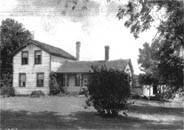
On a Farm |
|
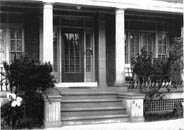
Urban Shrub |
|
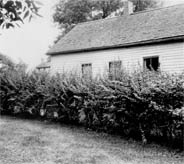
Barberry Hedge |
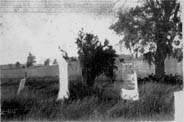
Cemetery |
|
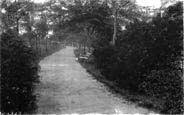
Public Park |
| Fig. 1. Types of sites in the north-central US where planted common barberry bushes could be found around 1900. |
Given the bush's widespread popularity, the Barberry Eradication Program was far-reaching in the context of compulsory eradication. Wheat farmers were not likely to oppose the removal of barberries, but not all farmers grew wheat and obviously not all residents of the states affected were even farmers. Opposition might be expected from those who prized their barberry bushes. From the evidence, however, compulsory eradication appears to have occurred with very little resistance, which is surprising given not only the popularity of the bush but long-held American attitudes toward the sanctity of private property. In marked contrast, one only has to consider all of the legal wrangling over the removal of prized backyard citrus trees in the recent attempts to eradicate citrus canker disease from Florida.
A general acceptance of regulation against plant diseases already existed during the period when barberry eradication began, exemplified by the passage of the Plant Quarantine Act of 1912 (3). But compulsory eradication was quite different than simply regulating the movement of plants. Compulsory eradication meant going on private property and convincing homeowners to part with their cherished barberry bushes.
This set up an interesting dilemma − to be successful, eradication officials would have to discredit the common barberry and its long-held favorable image, similar to the effort, described by historian Joshua Buhs, to tarnish the favorable public image of the ant during the campaign to exterminate the South American fire ant in the mid-20th century (1). How, then, were property owners to be persuaded to part with their prized barberry bushes by allowing government workers to trample all over their property to search them out and destroy them?
A major part of the answer lies in the unprecedented public relations and unique public educational effort that followed the program’s 1918 founding. Some of these efforts adopted tried-and-true strategies and used existing methods employed in agricultural demonstration and extension. Other tactics were more creative and novel.
A Dangerous Enemy Alien
When the Eradication Program began, the first thing eradication officials set out to do was to discredit the barberry as a generally unrecognized menace to US agriculture. In each of the thirteen states, press releases were sent to all newspapers; federal and state agricultural extension leaflets, bulletins, and circulars were distributed widely; and posters were conspicuously displayed in public places.
This effort was aided significantly by America’s entrance into World War I during the spring of 1917. With the memory still fresh of the disastrous losses due to the stem rust epidemics of 1916, a war-emergency atmosphere swiftly arose over fears of food shortages. Eradication officials were quick to link potential catastrophic crop losses with the presence of the “alien plant.”
One of the early attempts to tarnish the barberry was published in an extension leaflet from Purdue University in 1918. According to Purdue extension officials, “the common barberry is of no value except as an ornamental shrub,” but even as an ornamental its value was questionable. Playing to fears of food shortages, Purdue officials insisted “We cannot justify growing a worthless bush which is a menace to our food supply. Less barberries mean more food for our allies and ourselves” (Fig. 2).
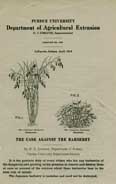 |
|
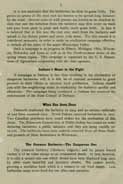 |
| Fig. 2. Purdue University Extension leaflet making the case against the common barberry in 1918. |
Worse than merely worthless as an ornamental, the barberry had become a dangerous foreign enemy. War-time propaganda posters in 1918 proclaimed “the common barberry the Kaiser’s Kin and Ally” (Fig. 3). The failure to get behind compulsory eradication was branded as anti-American. A press release issued in South Dakota in April, 1918, described the bush as “pro-German,” and warned that “it is decidedly disloyal to allow the common barberry bush to live − it must be treated as a dangerous enemy alien” (Fig. 4). Eradication officials also linked the bush to other contemporary causes of national anxiety, like the Russian Revolution of 1917 and the Red Scare that followed in the US. Playing on the nation-wide anti-radical hysteria, eradication officials branded the common barberry as a “red-handed anarchist of the grain field” (Fig. 5).
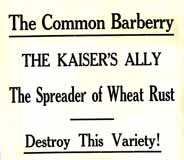 |
|
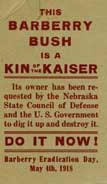 |
| Fig. 3. Propaganda posters used during World War I to tarnish the formerly widely favorable public image of the common barberry in the US. |
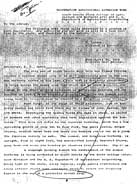 |
|
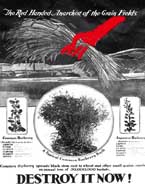 |
| Fig. 4. A South Dakota State College Cooperative Extension Service press release attempting to build support for barberry eradication. See in particular circled text referring to the barberry in disparaging terms as opposed to the “patriotic cereal crop.” |
|
Fig. 5. A barberry eradication poster in 1918 linking the bush to national fears over the Russian Revolution of 1917 and the Red Scare that followed in the US. |
Eradication officials appear to have looked all over for undesirable metaphors to attack the common barberry. They portrayed the bush as both thief and tax collector (Fig. 6), kind of an irony since the Eradication Program itself would demand a sizable portion of federal and state disease control budgets over the next several decades. And of course, if none of the other tactics instilled enough fear and loathing for the common barberry, eradication officials always had the devil to fall back on (Fig. 7).
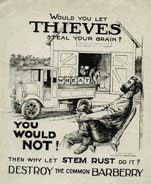 |
|
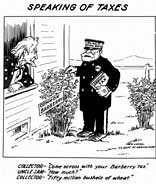 |
| Fig. 6. Posters from the Barberry Eradication Program linking the common barberry with national concerns over epidemics of stem rust of wheat and potential food shortages as well as negative images such as thieves. |
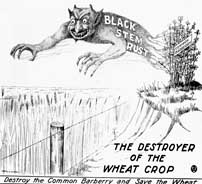 |
|
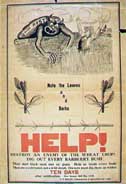 |
| Fig. 7. Posters from the Barberry Eradication Program labeling the common barberry as an “evil” threat to American wheat in 1918. |
In all seriousness, however, the public relations strategy appears to have worked very effectively in discrediting the favorable image of the barberry in the first year or so of the Eradication Program. Any significant opposition to compulsory eradication among homeowners and farmers appears to be absent (unpublished data). Legal actions involving property owners were rare exceptions. The tactics employed by eradication officials appear to have quickly opened and shut the case against the common barberry.
Educating the Public to Locate Barberry Bushes
Changing circumstances in the Eradication Program would soon bring the public to a different focus, however. When the program began in 1918, eradication officials assumed that most barberries would be found as planted bushes around home sites and towns. But as they began to survey large areas, they were surprised to find barberries far more numerous than anticipated and in places where they were not expected. The common barberry had, in fact, escaped the urban and farm home setting over the years to thrive in pastures, along fencerows, and deep in the woods (Fig. 8). This forced eradication officials to adopt new strategies. One result was that large numbers of hired field personnel entered the program after 1920. But eradication officials also came to view the public as central to their evolving strategies. With the discovery of enormous numbers of escaped bushes to track down, they began to see the public as a key component in actually locating them in the field.
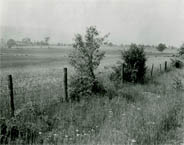 |
|
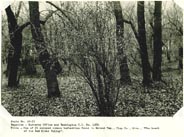 |
| Fig. 8. Typical types of sites where “escaped” common barberry bushes were increasingly located by Barberry Eradication Program officials after 1920. |
This new approach was evident in the public activities of the program after 1920. For example, there was a much larger and better-coordinated informational program than before − one that hit all media outlets, from newspapers and magazines to radio shows and lectures at civic organizations. There was also a profound shift in the publicity campaign from just discrediting the barberry to actually educating the public on how to identify the barberry in the field. For example, posters concentrated much less on discrediting the barberry and more on how to recognize the bush in the open (Figs. 9 and 10).
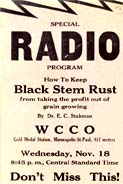 |
|
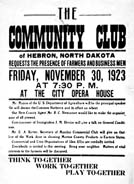 |
| Figs. 9. The Barberry Eradication Program publicity campaign in the early 1920s aimed at educating the public about the eradication effort and how to locate bushes in the field. |
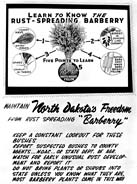 |
|
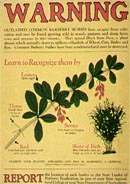 |
| Figs. 10. The Barberry Eradication Program publicity campaign in the early 1920s aimed at educating the public about the eradication effort and how to locate bushes in the field. |
The Eradication Program also adopted some new methods. One was to mail out plant specimens to aid in identification; another was to mail out informational cards with tips on identification and a request to respond to eradication authorities if any barberries were located (Fig. 11). Another new tactic was to leave specimen bushes tagged in conspicuous locations in the community so that the public could learn to identify them (Fig. 12). Bushes and posters were placed in towns, while roadside exhibits were set up at good, visible public locations. Program officials also placed window displays in stores fronts and other public buildings throughout the cooperating states, normally including specimen bushes as well (Fig. 13). Eradication authorities also coordinated field demonstrations and exhibits at local and state agricultural fairs in each of the cooperating states supported by posters, charts, literature, and specimen bushes. Again, the primary purpose was to educate the public on the proper identification of the barberry so they could actually go out into the field and locate bushes (Fig. 14).
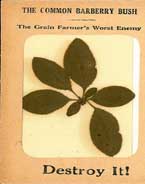 |
|
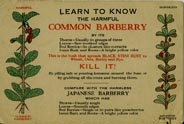 |
|
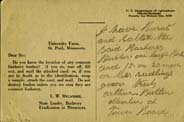 |
| Fig. 11. Leaf specimens and informational cards mailed to the public in the 1920s for aiding in the identification and location of barberry bushes. |
 |
|
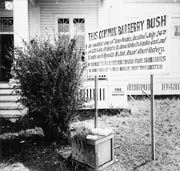 |
| Fig. 12. Specimen barberry bushes tagged in visible locations to aid the public in identification. |
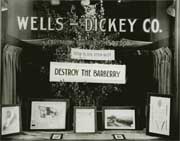 |
|
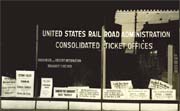 |
| Fig. 13. Barberry Eradication Program officials commonly placed informational displays with specimen bushes in stores fronts and other public buildings in the 1920s. |
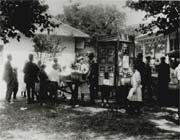 |
|
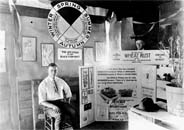 |
| Fig. 14. Barberry Program officials organized field demonstrations and exhibits at local and state agricultural fairs to educate the public on how to identify and locate bushes. |
Another strategy to get the public involved was the organization of “barberry bees,” similar perhaps to community barn raisings of the era. These events were organized to bring people together over a large area to see bushes and even to help hired field crews remove them. In 1922, for example, more than 200 people in Red Wing, Minnesota assembled with their teams of horses and mules to destroy 4,300 bushes in a single day (Fig. 15).
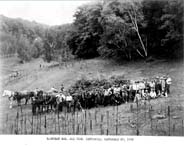 |
| Fig. 15. To get the public more involved in the eradication campaign, community "barberry bees" were organized to bring together large groups of people to locate and destroy bushes. This photograph is from Red Wing, Minnesota in 1922. |
Rust Busters
Perhaps the most novel strategy of all, however, was the recruitment of school children in locating and reporting bushes. One of the first efforts in the 1920s involved the enlistment of 4-H Clubs and Boy Scouts (Fig. 16). A more extensive school program developed in the late 1920s and early 1930s was the creation of what were called, Rust Busters Clubs, an organization to which all school children in the cooperating states were invited to join. Membership required only that the child learn about barberries and search for them. All members were given pins and anyone who found and reported a bush was awarded a certificate and medal from the governor of the state. A bronze medal was awarded for the first report of a bush and other medals for additional finds − a gold medal was presented for the fifth verified report (Fig. 17).
Eradication officials solicited all public schools in the eradication states for participation on a county by county basis. The County School Superintendent was asked to endorse the program, after which eradication officials would visit the various county schools to give lectures supplemented by charts, slides, movies, and specimen materials. Eradication officials also encouraged participation from the students in their classroom instruction. Students wrote essays for prizes and produced their own posters on the barberry (Figs. 18 and 19). The program was carefully designed to also increase their parents’ awareness and involvement in the eradication effort as well (Fig. 20).
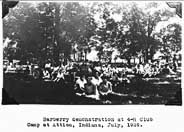 |
|
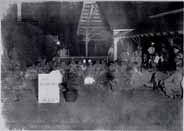 |
| Fig. 16. One of the most original strategies involving the public in the Barberry Eradication Program was the enlistment of school children in locating and reporting bushes. The initial efforts centered on 4-H Clubs and Boy Scouts in the early 1920s. |
| Fig. 17. In the late 1920s, Barberry Eradication Program authorities developed a widespread public school program to gain the cooperation of children in the eradication effort. Organizations called Rust Busters Clubs were established in schools throughout the participating states. To join, children were required to learn about the barberry and its relation to stem rust disease and how to locate bushes in the field. Club members were given pins and awarded certificates and medals for their participation. |
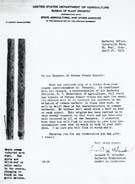 |
|
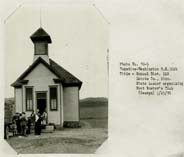 |
|
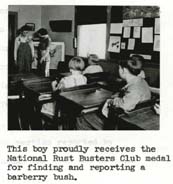 |
| Fig. 18. In the late 1920s, Barberry Eradication Program authorities developed a widespread public school program to gain the cooperation of children in the eradication effort. Organizations called Rust Busters Clubs were established in schools throughout the participating states. To join, children were required to learn about the barberry and its relation to stem rust disease and how to locate bushes in the field. Club members were given pins and awarded certificates and medals for their participation. |
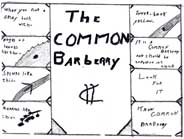
Student: Calvin Hansen |
|
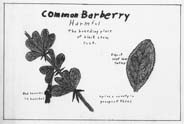
Student: Reynold Jacobsen |
| Fig. 19. Students penned essays and created their own posters on barberry, as shown here from a public school in Redwood, Minnesota. |
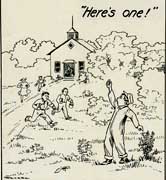 |
|
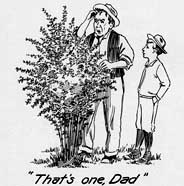 |
| Fig. 20. With the creation of Rust Busters Clubs in public schools during the 1920s, Barberry Eradication authorities also intended to foster the participation of parents in the eradication campaign. |
Based on the annual reports from each of the cooperating states, school children were involved in locating thousands of barberry bushes in the 1930s (Fig. 21). The Rust Buster Clubs represent a unique example of using school children to participate in efforts to solve a large-scale agricultural problem. To quote the printed literature from the program, eradication officials took advantage of the “desire of children to learn by doing” and “their exceptional intelligence and ability to accomplish results when given a problem.”
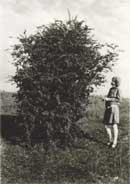 |
|
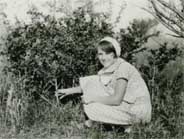 |
| Fig. 21. The extensive involvement of school children, like the ones shown here, in the Barberry Eradication Program during the early 20th century was a rare and novel experiment in connecting the public to solving large-scale agricultural problems like stem rust disease. |
Think about it: school children of the early 20th century learning about the barberry and stem rust of wheat. Today, plant pathology is not taught until at least undergraduate education, and often only in graduate programs. It is amazing to think that these students were learning about this level of biology − drawing life cycles and disease cycles and learning about the biology and ecology of the barberry. I know of no other event in agricultural science quite like it.
Literature Cited
1. Buhs, J. B. 2004. The Fire Ant Wars: Nature, Science, and Public Policy in Twentieth-Century America. Univ. of Chicago Press, Chicago, IL.
2. Campbell, C. L., and Long, D. L. 2001. The campaign to eradicate the common barberry in the United States. Pages 16-51 in: Stem Rust of Wheat: From Ancient Enemy to Modern Foe. P. D. Peterson, ed. The American Phytopathological Society, St. Paul, MN.
3. Campbell, C. L., Peterson, P. D., and Griffith, C. S. 1999. The Formative Years of Plant Pathology in the United States. The American Phytopathological Society, St. Paul, MN.
4. Kansas State University 2013. Potential boost for world's food supply: Resistance gene found against Ug99 wheat stem rust pathogen. Online (reprinted, 27 June 2013, ScienceDaily, Rockville, MD). Kansas State Univ., Manhattan, KS.
5. Pardey, P. G., Beddow, J. M., Kriticos, D. J., Hurley, T. M., Park, R. F., Duveiller, E., LSutherst, R. W., Burdon, J. J., and Hodson, D. 2013. Right-sizing stem-rust research. Science 340:147-148.
6. Peterson, P. D. 2003. The Common Barberry: The Past and Present Situation in Minnesota and the Risk of Stem Rust Epidemics. Ph.D. Dissertation, North Carolina State Univ., Raleigh, NC.
7. Schumann, G. L., and Leonard, K. J. 2000. Stem rust of wheat (black rust). Online. The Plant Health Instructor. DOI: 10.1094/PHI-I-2000-0721-01.
8. Singh, R. P., Hodson, D. P., Huerta-Wspino, J., Jin, Y., Bhavani, S., Njau, P., Herrera-Foessel, S., Singh, P. K., Singh, S., and Govindan, V. 2011. The emergence of Ug99 races of the stem rust fungus is a threat to world wheat production. Annu. Rev. Phytopathol. 49:465-481.
*This Feature Article is from a presentation by the author at the annual meeting of the Agricultural History Society in Springfield, Illinois in 2011.
